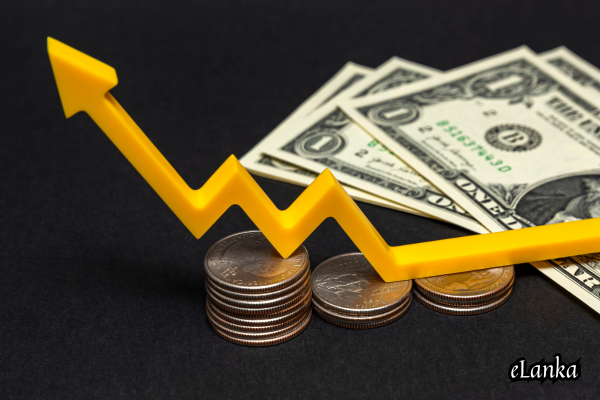Fundamentals of Economics – Demand and Supply – By Dr. Gnana Sankaralingam

 Economics is the study of how a group of individuals make decisions about the allocation of scarce resources. Since it deals with human behaviour, it is considered as social science. It is management of basic economic problem of demand and supply. Human wants and needs are infinite but nearly all resources are scarce, which forces the economic agents in making choices by allocating available resources between competing uses. Everyone have certain basic needs to live such as food, water and shelter. Everyone also have infinite things they want such as designer clothes, smart phones and luxury vehicle. Economics is how best to satisfy the people as effectively as possible. As these economic decisions are based often on opinions and judgements, they might not always make the most economic sense.
Economics is the study of how a group of individuals make decisions about the allocation of scarce resources. Since it deals with human behaviour, it is considered as social science. It is management of basic economic problem of demand and supply. Human wants and needs are infinite but nearly all resources are scarce, which forces the economic agents in making choices by allocating available resources between competing uses. Everyone have certain basic needs to live such as food, water and shelter. Everyone also have infinite things they want such as designer clothes, smart phones and luxury vehicle. Economics is how best to satisfy the people as effectively as possible. As these economic decisions are based often on opinions and judgements, they might not always make the most economic sense.
Demand is the quantity of goods or services that would be bought at any given price over a period of time. A market exists where there are buyers and sellers of particular goods, buyers demanding and sellers supplying them. Law of demand states that there is an inverse relationship between price of good or service and the quantity demanded. If price is low, the higher will be the quantity demanded and if the price is high, demand will decrease. Market demand is the total quantity of a good or service that potential buyers would choose to buy at any given price. There is extension of demand when quantity of demand rises and there is contraction of demand when quantity of demand falls. Levels of demand and supply in a market determine the price charged for and the quantity sold, for every good or service. First influence on demand is the price of goods. Consumer surplus is the difference between how much the buyers are prepared to pay for a good and what they actually pay for.
Demand for a good will rise or fall if there were changes in other conditions of demand such as income, price of other goods, consumer preferences and size of population. Second influence on demand is income of consumer. When income rises demand for quality (normal) goods rises and cheaper (inferior) goods falls at any given price. Demand for a good may respond to changes in the price of other goods. Two goods are said to be substitutes if the demand of one good is likely to rise if the price of other good rises. Two goods are said to be compliments if an increase in price of one good causes the demand for other good to fall or a fall in price of one may lead to increse in demand for both. Consumer preference is whether one likes or dislikes a product according to tastes and fashions. Firms may influence choice of customers by advertising. Also other people’s demand may sway one’s preference. When there is increase in population it is likely to lead to a rise in demand for goods.
Supply is the quantity of goods or services that would be sold by producers at the market at a given price over a particular time. Law of supply states that there is a direct relationship between price of good or service and the quantity supplied (if the price increase the supply will increase and vice versa). Producers and sellers aim to maximise their profits, higher the price for good or service higher the profit. If price of a good increases, producers are likely to take advantage of it to increase their profit. Higher profit provides an incentive to expand production and increase supply (extension of supply). Increasing supply increases costs. Firms will only produce to increase market supply levels if the price increase is more than the costs. Fall in price leads to a fall in quantity supplied (contraction of supply). At a lower price some firms will cut back on relatively unprofitable production whilst others will stop producing altogether, and some of the latter could go out of business unable to cover the costs from the price received. Cost of product will be pushed up due to increased labour and the capital necessary to increase the output. Producer surplus is the difference between the market price received by the firm and the price at which it is prepared to supply.
Factors other than the price that can cause supply of a product to change are called conditions of supply such as costs of production, technology and price of other goods. If cost of production increases at any given level of output, due to increase in factors such as wages and raw materials, it will reduce the profit of producers leading to decrease in supply. But if cost of production is decreased, it will lead to an increase in supply. If new technology is introduced to the production process, it could lead to a fall in costs of production. Greater productive efficiency will encourage firms to produce more at the same price or produce the same amount at lower price or any combination of the two. More productive staff will lead to increase in output which increases supply. An indirect tax on a good effectively increases costs of a producer leading to decrease in supply. A subsidy on a good would decrease costs of production thereby encouraging production leading to increase in levels of supply.
Economic activity involves making use of scarce resources (inputs) to produce things required by the people (outputs). Producers, consumers and governments are agents (participants) in an economy, each of them making decisions of how resources are allocated. Producers decide on what to make and how much they are willing to sell, consumers decide on what they need to buy and how much they are willing to pay for and governments decide on how much to intervene in the way how producers and consumers act. Economic activity consists of making goods and providing services and consumption of these which satisfy the want and increase the economic welfare of the people. Since there is an endless amount of things that could be produced and consumed, questions arise as to what to produce, how to produce and whom to produce. Laws of demand and supply come into play to assist.
Demand and supply is an economic model of price determination. It says that the unit price for a particular good or other traded item, in the perfectly competitive market will vary until it settles at the market clearing price when the quantity demanded is equal to the quantity supplied, such that an economic equilibrium is achieved for price and quantitiy transacted. Excess demand is when demand for a good or service is greater than the supply and excess supply is when the quantity of good or service supplied is over than the quantity demanded. Free interaction of supply and demand is known as market force which balances demand and supply. When the supply is equal to demand all products that are presented for sale are sold. Aggregate demand is total demand or consumer spending in an economy over a period of time, whereas aggregate supply is total output produced in an economy at given price level over a period of time. Thus demand and supply are the core of economics.






















